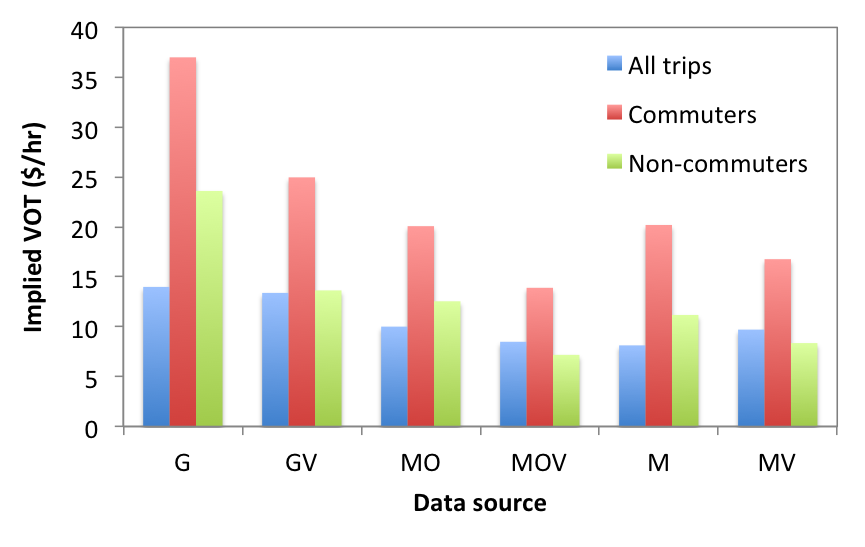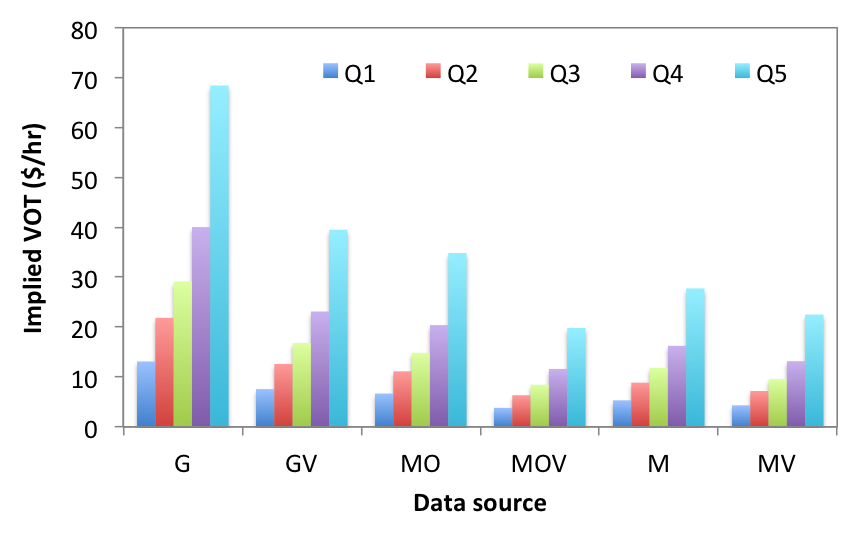|
In a recent study in collaboration with Prof. Stephan Winter at the University of Melbourne and his PhD student Zahra Navidi, we have estimated the Value of Time (VOT) for Victorian residents. Why calculating VOT? VOT is the opportunity cost of the time that a traveller is willing to spend on his/her journey. In other terms, it's the price that a traveller is willing to pay in order to save travel time. VOT is often used in cost benefit analysis of transportation projects. It is a critical measure to evaluate the performance of many transportation policies, specifically toll projects. What's our method? There are generally two methods to estimate VOT. A straightforward approach is to ask travellers how much they are willing to pay to save let's say 1 hour of travel time. This is often done through collecting stated preference (SP) data which may suffer from less realism because it's "stated preference" and is not coming from individual's actual behaviour. An alternative approach is to estimate an "implied" VOT from revealed preference (RP) data. This is what we have done here. We have used the Victorian Integrated Survey of Travel and Activity (VISTA) to estimate different mode choice models. We then used the estimated coefficients of travel time and travel cost from the model to estimate the implied VOT. What is the VOT in Melbourne? VOT varies across individuals and highly depends on trip purpose and level of income. The average implied VOT for all trips in Melbourne is $9.71 per hour. When segmenting the market into commuters and non-commuters, we have estimated VOT of $16.77 per hour for commuters and $8.36 per hour for non-commuters. This is consistent with the numbers estimated by Prof. Hensher and Prof. Rose using SP data in a 2010 study. They estimated the VOT for commuters and non-commuters in the Australian urban context to the respective values of $22.69 and $8.01 per hour. We have actually estimated a range of VOTs depending on the type of data source (Google alone, Google+VISTA, MATSIM+OTP, MATSIM+OTP+VISTA, MATSIM alone, and MATSIM+VISTA) used to estimate the attributes of the unchosen alternatives in the mode choice model.
We have also estimated VOT for different levels of income (Q1 the lowest to Q5 the highest quantile of income). Obviously, higher income is associated with higher VOT. If you are interested to learn more about our study, please contact me and I would be more than happy to send you a copy of the paper which is just submitted to the Transportation Research Board (TRB) Annual Meeting. Special thanks to Zahra Navidi for her nice work.
0 Comments
Leave a Reply. |
AuthorDr. Meead Saberi, lecturer in transportation engineering, data guru, and urban scientist Archives
August 2017
Categories |


 RSS Feed
RSS Feed